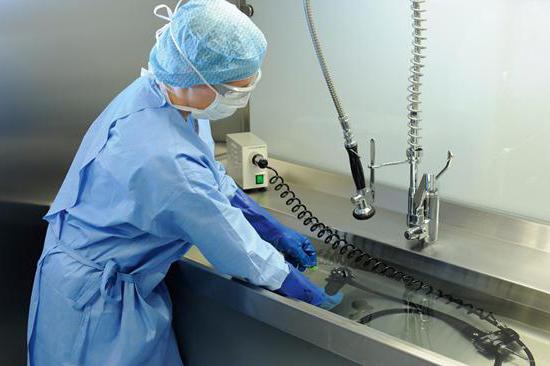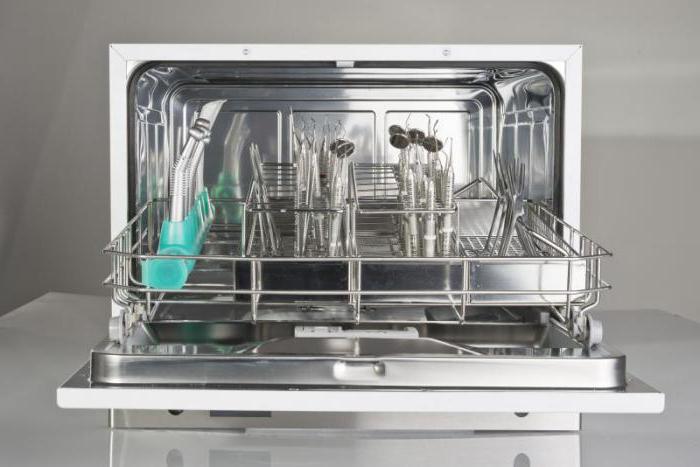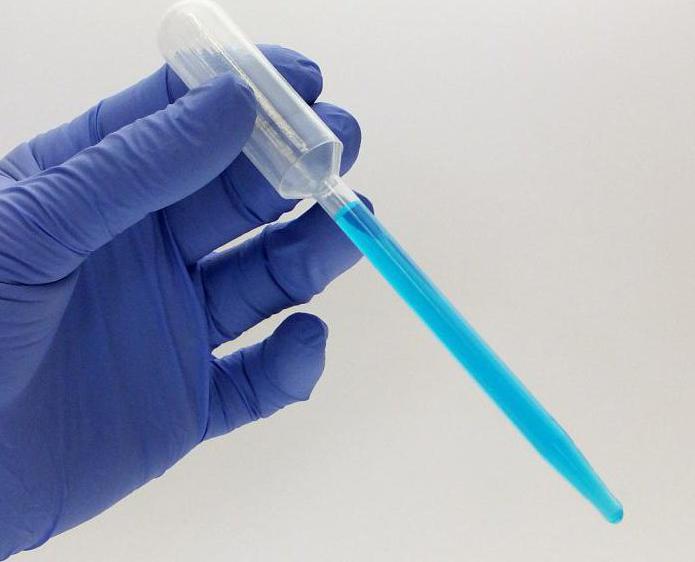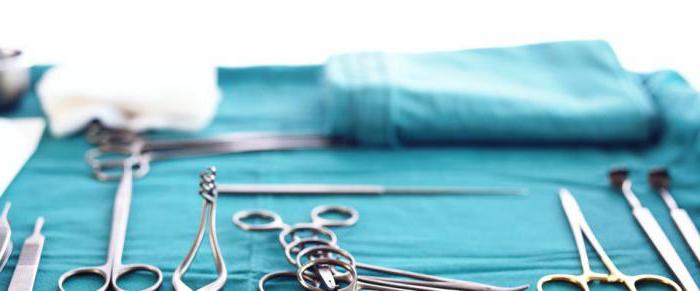Pre-sterilization treatment is a prerequisite in order to clean instruments and all medical devices from all sorts of fatty, protein, other mechanical impurities and drug residues. Such cleaning must be carried out, since it is the tools and materials that represent the highest priority in the transmission of blood-borne infections. To minimize the risk of infection, in modern medical practice, the use of disposable supplies and 3-step processing of tools and reusable products (disinfection, pre-sterilization cleaning, sterilization measures) is practiced.
Why is disinfection not enough?
This is really not enough for the further safe use of instruments and medical products already in use. During the disinfection, mistakes can be made that without the other two processing steps (pre-sterilization cleaning, sterilization) will not allow to obtain biologically safe tools.

Firstly, disinfectants can be used tools and techniques that are not approved for use. It is possible that the required permissive package of documents is not available for the substances, or its use is unacceptable in medical institutions, or it (the product) is generally falsified and cannot be used for any purpose.
Secondly, the conditions under which these disinfectants were stored and transported (temperature conditions, prolonged exposure to direct sunlight, expired shelf life) may be violated. The tool may not be correctly selected (does not destroy the hepatitis B and C pathogens, HIV), which makes further actions, in particular, such as pre-sterilization cleaning and sterilization measures, useless.
In addition, the incorrectly selected disinfection regimen will not ensure the destruction of bloodborne pathogens. Yes, and the disinfection itself may not be carried out correctly (errors in calculating the concentration, the exposure time was not respected, the working solution has expired).
Cleaning Risk Factors
Even one (not to mention a few) error practically negates the effectiveness of disinfecting measures. As a result, pre-sterilization cleaning of medical devices can be dangerous for medical personnel in biological terms.
In addition, there is a likelihood of infection during the second stage of cleaning due to the direct contact of the health worker with tools and products. To the greatest extent, this can be attributed to the manual type of processing (to be described below), however, with a mechanical person, he also comes into contact with the toolkit when shifting and sorting.

Further, it is important that the medical staff do not neglect personal protective equipment in order to avoid infection (we are talking about gloves). It is also worth mentioning that the bulk of modern disinfectants is designed to combine processes such as disinfection and pre-sterilization cleaning. However, immersion in such a solution of a medical device does not mean that both of these measures were carried out at once - both disinfection and cleaning. After the end of the first stage, the second must be carried out.
Manual processing
The stages of pre-sterilization cleaning manually are as follows. After all products are sanitized and thoroughly washed in running water, they are disassembled and placed in a detergent composition. All channels and cavities of the processed products must be completely immersed in the liquid and filled with it. The duration of soaking depends on the detergent used and can range from 15 minutes to 1 hour. Then each product is separately washed with a brush or wiped with a cotton-gauze swab for at least 1 minute.

Further products and tools are rinsed in running water. The duration of the procedure depends on the tool used. In the sink that is used at this stage, washing the hands of medical staff is unacceptable.
The last step in manual processing is that all products and tools are rinsed in distilled water and dried in a stream of hot air masses.
Combined Processing
Medical pre-sterilization cleaning can be combined with disinfection measures, and it is carried out manually. At the initial stage, all products are soaked in special detergents with disinfecting properties. Next, each processed unit is individually washed with a brush or cleaned with a cotton-gauze swab for 1 minute. It is important to remember about maintaining the temperature regime, if this is specified in the instructions for use of the detergent composition.
Next, each unit of equipment and medical devices is rinsed in running water for the time required for a particular product (indicated in the instructions). The use of the sink in which the procedure is performed for other purposes is unacceptable. At the final stage, each unit is rinsed with distilled water and dried under hot air.
The mechanical method of cleaning products
In modern large medical institutions, mechanical pre-sterilization cleaning of products is most often used. All tools and products are placed in special equipment whose main functions are disinfection and pre-sterilization treatment. For this type of work, disinfectants can be used that have an additional detergent effect, or are intended separately for disinfection and washing. If the disinfection is carried out thermally, then for further cleaning it is possible to use only detergents. If some other technology is specified for a particular equipment, then the cleaning measures are carried out in accordance with the instructions.

Further products and tools are rinsed in running water. Duration of the procedure - according to the instructions for use of the detergent. This stage may be part of the functional cycle of the equipment involved.
The mechanical pre-sterilization cleaning is completed by rinsing (distilled water) of all treated elements and drying with hot air masses. This stage can also be part of the functional cycle of the equipment used.
Machining benefits
Today, the most promising and preferred is the pre-sterilization cleaning of medical devices by mechanical means. There are several reasons for this.
The biological safety of medical staff is ensured at the highest level, since tactile contacts of people with medical instruments and products are minimized. Further, this method is the most cost-effective, because, firstly, it does not take a lot of time to process a large number of tools and medical devices, and secondly, the ability to damage expensive tools is minimized (as a result, its service life is increased).
With this cleaning method, the greatest biological safety of patients is ensured: products and instruments of the most complex configuration are cleaned qualitatively.
Equipment and selection of detergents
At present, in the territory of the Russian Federation two types of equipment for machining are registered and approved for use, which have significant differences. The principle of operation of one is based on the use of ultrasound. Pre-sterilization cleaning of instruments in another type of equipment is carried out with detergents that do not contain disinfection components, since disinfection is carried out thermally. This type of equipment in the medical environment is called a thermal disinfector.

The second type of equipment has obvious advantages over ultrasonic devices, because in a thermal disinfector, in fact, a full cycle of processing medical devices and tools is carried out - disinfection, cleaning, rinsing, drying. It remains for a person to correctly load the tools, and then correctly extract them.
Another important nuance is the selection of detergents. Two types are allowed for use: based on surfactants (surfactants) and enzymes. The former have high washing qualities and are more in demand in the market. However, these tools have some disadvantages.
Firstly, they are characterized by high foaming, and this can become a critical factor due to the incompatibility of the detergent composition and equipment during mechanical cleaning.
Secondly, after detergents made on the basis of surfactants, a film remains on the treated surface of medical devices and instruments, for washing off of which a particularly thorough rinse is required.
Thirdly, in order to obtain the most optimal result, it is required to maintain a certain temperature at which pre-sterilization cleaning is carried out.
Detergents based on enzymes have the ability to destroy not only the walls of bacterial cells, protein shells of viruses, but also biofilms. In addition, fermented detergents are characterized by low foaming, and they do not lose activity at room temperatures.
Quality control: biological fluid residues
To determine blood residues, the quality control of pre-sterilization purification is performed using several samples: benzidine, orthotolidine, amidopyrine and azopyramic.
Benzidine test can be carried out in two ways. An aqueous solution of benzidine chloride of 0.5-1% (water - distilled) is combined with the same volume of a 3% solution of hydrogen peroxide. The second option is to prepare a solution of 5 ml of 50% acetic acid and 0.025 g of benzidine sulfate with hydrogen peroxide (3%) in a volume of 5 ml.
Orthotolidin test can be made in 3 versions. 5-10 ml of the main alcoholic solution (orthotolidine - 4%, ethyl alcohol - 96%) is mixed with the same volumes of distilled water and 50% acetic acid. The second modification consists in mixing a reagent consisting of 0.25 g of orthotolidine and equal volumes (5 ml each) of 50% acetic acid and 3% hydrogen peroxide. The third option is to combine equal volumes of a 1% aqueous solution of orthotolidine and 3% hydrogen peroxide.
In order to control pre-sterilization cleaning using amidopyrine test, prepare the reagent from the same (2-3 ml) volumes of a 5% alcohol solution of amidopyrine, 30% acetic acid and 3% hydrogen peroxide. 2 drops of the finished reagent are applied to a non-hot surface. If the sample has acquired a blue-violet hue, the surface has not been cleaned sufficiently.

Reagent for azopyram test made on the basis of the initial solution of azopyram.In turn, this solution consists of 100 g of amidopyrine and 1 g of hydrochloric acid aniline mixed together, supplemented with 1 l of ethyl alcohol (95%). Thus prepared composition can be stored (container - corked bottle) without light at room temperature for 1 month, in the refrigerator - up to 2 months. When it is required to conduct a test, the initial azopyram and 3% hydrogen peroxide are mixed in equal proportions. If, after applying the reagent to a cold surface, the sample turns violet, and then quickly changes color to pink-lilac, it means that there are blood residues on the instruments and products.
When conducting an azopyram test, it is important to take into account some features of the reaction. The reagent prepared for testing can be used no later than within 1-2 hours. Store it at this time in bright light and elevated temperature is unacceptable. The color change of the sample, which occurred a minute after application, does not give reason to believe that the quality of the pre-sterilization cleaning does not meet the required according to the instructions.
In the process of pre-sterilization purification, it is highly undesirable to use hydropyrite tablets instead of hydrogen peroxide. The reason is that the solution of hydropyrite contributes to the rapid formation of corrosion, and this leads to damage to tools, especially with cutting planes. If there is a shortage of medical hydrogen peroxide, it is permissible to replace it with technical grade A and B peroxide during processing.
Drops of reagents are applied to controlled products. In the presence of blood residues, the composition turns blue-green.
Quality Control: Detergent Remains
All stages of pre-sterilization cleaning with any processing method (manual, combined, mechanical) are completed by rinsing medical devices and instruments. Whether this stage was carried out qualitatively can be determined using phenolphthalein sample. 1-2 drops of a one percent alcohol solution of phenolphthalein are applied to the processed (i.e. washed) product. If it is not washed well enough and there are residues of detergents on its surface, the sample will turn pink.
Samples are positive ...
If at least one of the tests performed gives a positive result, it means that there are either blood stains or residues of detergents that were used on the treated surfaces. In such cases, all products and tools are subject to re-treatment until the quality control of the pre-sterilization treatment yields negative results (i.e., the samples do not change color).

Quality control and effectiveness of pre-sterilization cleaning should be subject to 1% of each tool and type of products that are processed during the day. Specialists of disinfection or sanitary-epidemiological stations should control the quality of pre-sterilization treatment in medical and medical-prophylactic institutions at least once a quarter.








